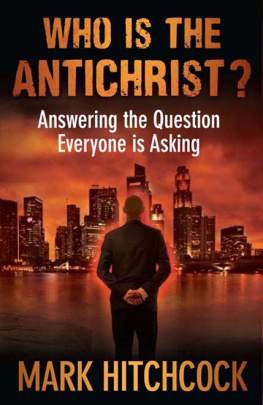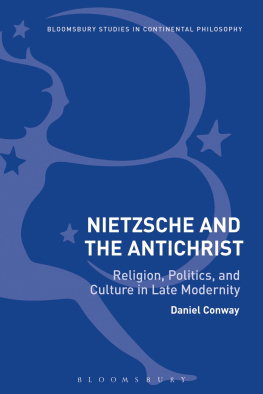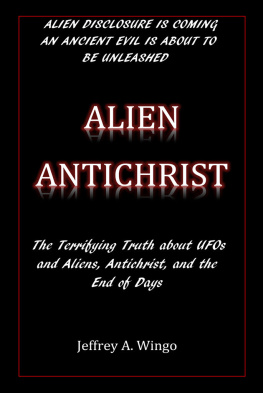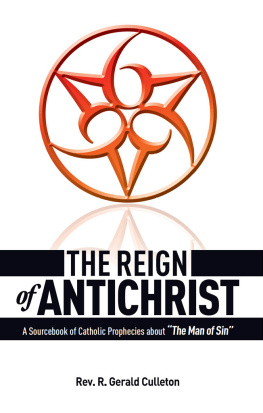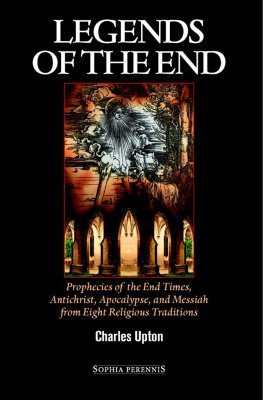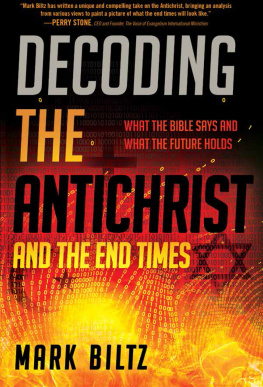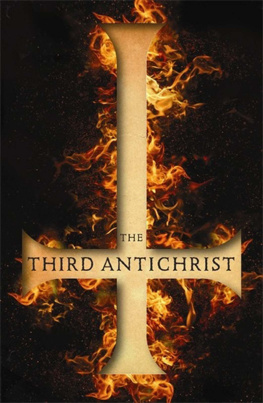The Islamic Antichrist Debunked
A Comprehensive Critique
By Chris White
Copyright 2014 by Chris White
All rights reserved. No part of this publication may be reproduced, distributed, or transmitted in any form or by any means, including photocopying, recording, or other electronic or mechanical methods, without the prior written permission of the publisher, except in the case of brief quotations embodied in critical reviews and certain other noncommercial uses permitted by copyright law. For permission requests, write to the publisher, addressed Attention: Permissions Coordinator, at the address below.
CWM Publishing
P.O. Box 272
Ducktown TN 37326
The Islamic Antichrist Debunked A Comprehensive Critique / Chris White
ISBN: 978-0-9912329-4-9
Cover image by M. S. Corley
Editing by Rene Holt
Unless otherwise stated, all Scripture is taken from the New King James Version.
Copyright 1982 by Thomas Nelson, Inc. Used by permission. All rights reserved.
First Edition
Further information available at the authors website:
http://BibleProphecyTalk.com
Dedication
To Connie, my wife and best friend.
Table of Contents
Part 3
Part 4
Appendices
Preface
The theory that the Antichrist will be a Muslim has become increasingly popular in the years following 9/11. The rise of extremist groups like ISIL/ISIS and Al-Qaeda have also contributed to many Christians asking themselves or their pastors if its possible that the great enemy of last days, the Antichrist, might in fact be a Muslim.
I myself used to hold to the Islamic Antichrist theory, and I, therefore understand and sympathize with many of the arguments that people make for it. However, I have since come to believe that the Islamic Antichrist theory, when examined closely, does not line up with the Bible and that many of the arguments made in its defense can be shown to be false with certainty.
This book is intended to be a comprehensive refutation of all the major arguments that are used to support the Islamic Antichrist theory. Though many great scholars and teachers have written articles against this theory, there has not to date been a resource that attempts to systematically refute all the points that are raised in defense of the view.
Since it is my sincere hope that this book will be useful to as many people as possible, I have tried to keep my own personal views about the origin and nature of the Antichrist to an absolute minimum, choosing instead to argue against the Islamic Antichrist theory without presupposing an alternative origin for the Antichrist. In other words I wrote this book in a way that the reader can agree with, no matter what his views on the Antichrist are.
The first and longest part of this book will describe and refute the primary arguments that Islamic Antichrist proponents make in support of their theory, whether those arguments are from Scripture or are based on circumstantial evidence. Examples of the types of arguments in this section include the Islamic Empire being in view in Daniel 2 and 7, the Assyrian in Isaiah and Micah 5 referring to the Antichrist, and the Mark of the Beast being an Arabic word and not a number, among many others.
The second part of this book will examine the claims of Islamic Antichrist proponents regarding Islamic eschatological figures such as the Mahdi, Isa, and the Dajjal. The Islamic Antichrist theory relies greatly upon comparisons of these figures with Christian counterparts such as The Antichrist, The False Prophet, and Jesus. I will spend quite a lot of time discussing the origin of Islamic eschatology, and then take the claims of Islamic Antichrist theorists about these Islamic eschatological figures one by one in an effort to refute their arguments.
In the third section of this book I will look at some of the logical inconsistencies with the claims of the Islamic Antichrist theorist using the doctrines that what we know to be true about the Antichrist from Scripture.
In the fourth and final section, I will discuss why I believe the Islamic Antichrist theory is not just wrong but extremely dangerous. In this section I will break my self- imposed limitations on discussing my own personal views about the nature and origin of the Antichrist, and though I will not argue for my personal position, I will ask the reader to consider the potentially disastrous results that the Islamic Antichrist theory could cause if my view is correct.
In this book I will be quoting extensively from Joel Richardson, who I believe is the most intelligent and articulate advocate for the Islamic Antichrist theory. I respect Mr. Richardson greatly, both as a fellow brother in Christ and as a researcher. On occasion I will also reference Walid Shoebats views, particularly on issues that Richardson has not published, like the Mark of the Beast, and Mystery Babylon. These two men are the most responsible for the promotion of the Islamic Antichrist theory, and it is often their work that is referenced when pastors teach this view. Therefore, I have intentionally limited the authors I will be directly referencing to these two men. I want to say at the outset that I appreciate Shoebat and Richardson greatly, especially because through their efforts a large number of Christians are considering end times matters seriously for the first time. Though I may disagree with them on certain issues, as Christians we agree on what matters the most.
Part 1
Examining the Arguments
Chapter 1
Nebuchadnezzars Dream
The second chapter of the book of Daniel describes Nebuchadnezzar, king of Babylon, having a dream that troubles him greatly. In his dream he saw a statue of a man consisting of four metals, a head of gold, a chest and arms of silver, a belly and thighs of bronze, and legs of iron. The bottom part of this statues legs was mixed with both iron and clay.
In verse 36 Daniel begins to interpret Nebuchadnezzars dream. He explains that the different metals in the statue represent different kingdoms that will appear on earth. He explicitly tells us that the head represents Nebuchadnezzars Babylonian kingdom, and while he doesnt give us the names of the other three kingdoms, they are believed by the vast majority of Christian scholars to be Medo-Persia, Greece, and Rome, in that order.
Islamic Antichrist theorists, such as Joel Richardson, attempt to make a case that the legs of iron, commonly identified as Rome, is actually the Islamic Empire which existed from 632 AD to 1923. Richardsons main argument centers on Daniel 2:40 which seems to suggest that the legs of iron kingdom somehow conquers all the other kingdoms that came before it (Babylon, Medo-Persia, and Greece).
And the fourth kingdom shall be as strong as iron, inasmuch as iron breaks in pieces and shatters everything; and like iron that crushes, that kingdom will break in pieces and crush all the others. (Daniel 2:40)
Richardson believes that crushing all the others is a reference to a kingdom being able to claim that it is holding all the land that the previous empires held in history. He makes the case that Rome cannot be the fourth kingdom because even at its largest point, the geographical borders of the Roman Empire didnt encompass all of the territory that other empires on the list held. For example, Babylon and Medo-Persia held some territories which were much further east than Rome ever reached, and therefore Rome cannot be said to have crushed the others, but that the Islamic Empire which followed the Roman Empire could make that claim.



